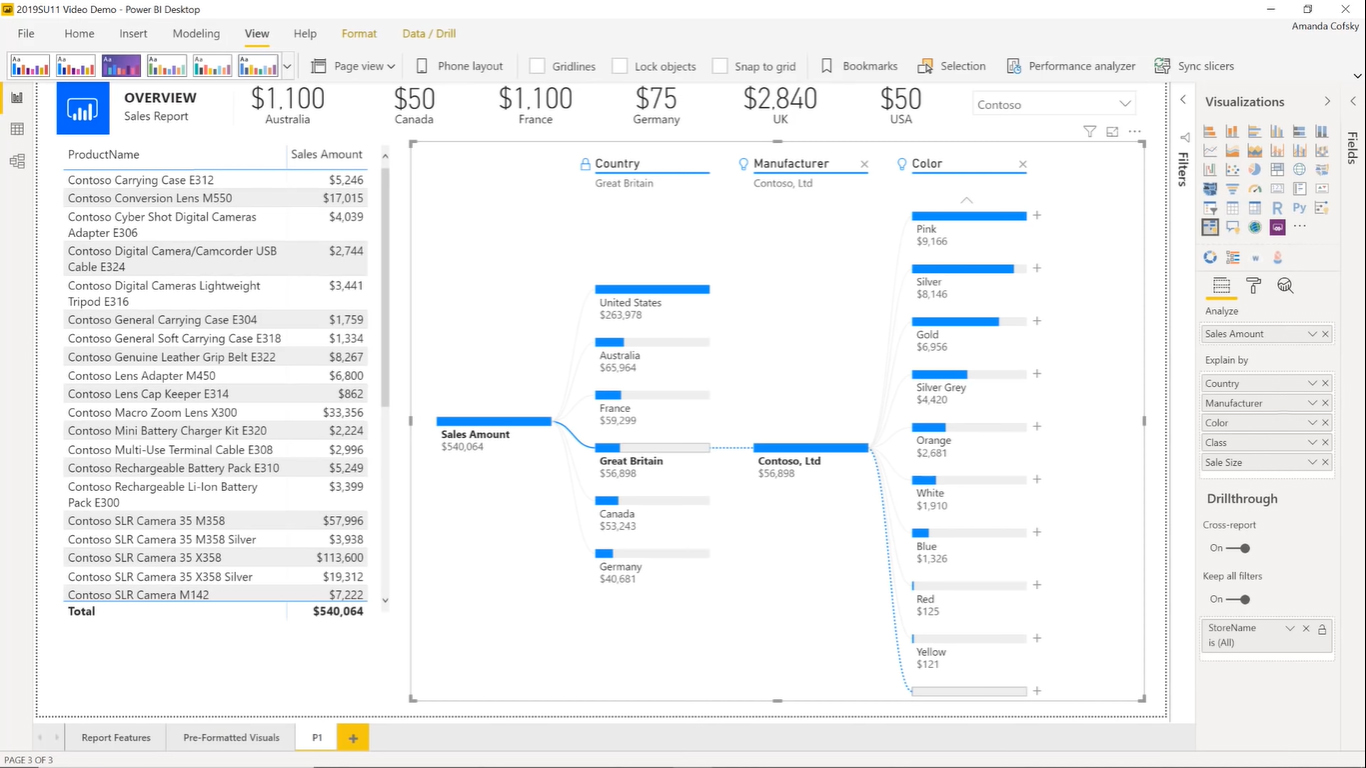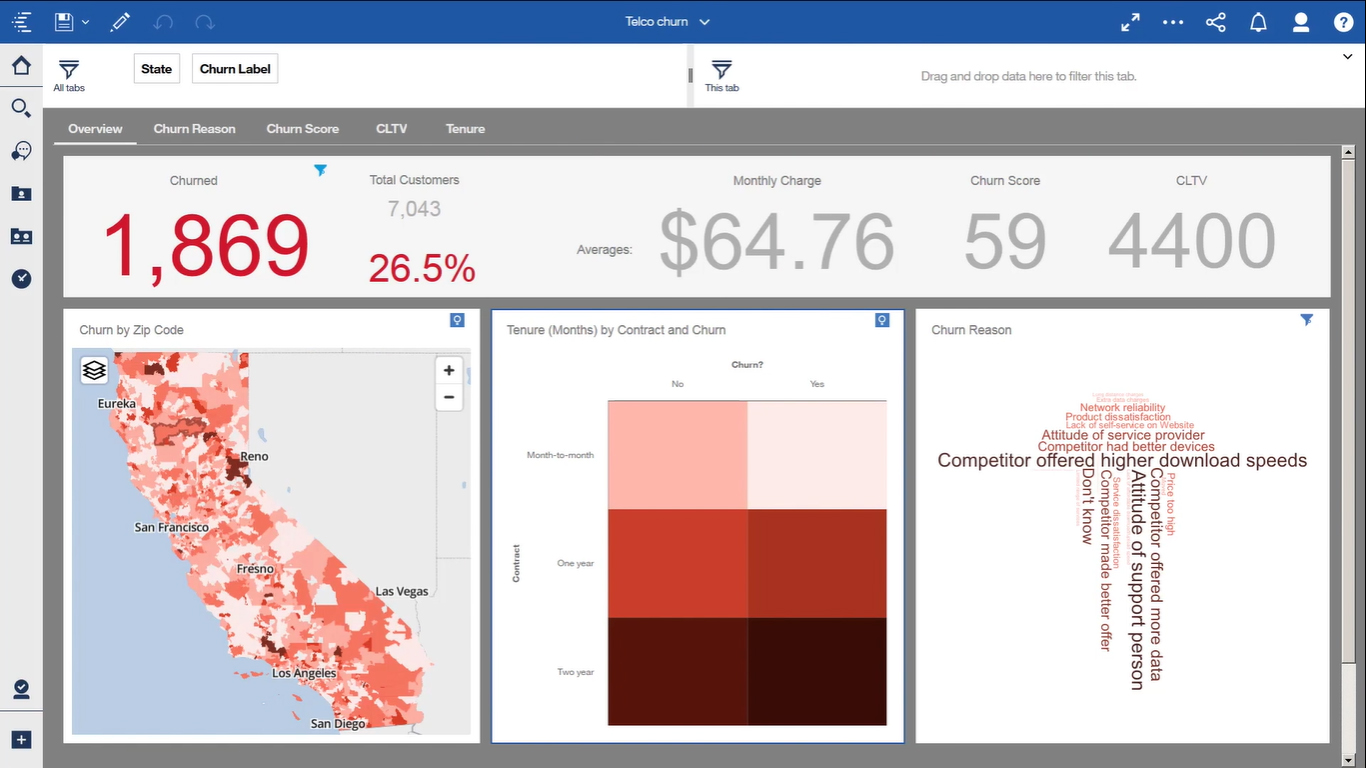Competitive advantage often results from a company’s ability to utilize and analyze data to act accordingly. When you compare data analysis software with business intelligence platforms, the former offers more insights and benefits than the latter. That is why having the right business intelligence software becomes critical to this objective, as this can help you organize, retrieve, analyze, and report based on the information you have. The ideal software must easily integrate with your data gathering software, users shouldn’t be swamped with complex instructions, and reports must show the desired data clearly. Meanwhile, the wrong choice might make your data analysis more complicated than it should be, consequently sending your costs and efficiency spiraling out of control.
Among the big names in the business intelligence software market, Microsoft Power BI and IBM Cognos are two of the more popular ones that come upfront. They both cater to the medium and large business markets, and each has its strengths and weaknesses. For this article, we will delve on a head-to-head Microsoft Power BI vs IBM Cognos comparison so you can gather insights on their respective features.
So, which software is better?
The answer depends on many factors. Microsoft Power BI might be a more natural choice off the bat as it offers a smoother transition to those who have used Microsoft Office, specifically Microsoft Excel. If you are after cost considerations, both products offer free trial versions, but once the period is up, Power BI will cost much less.
Microsoft Power BI and IBM Cognos differences
Features
- Platforms supported: Power BI can run on via the web and Windows, as well as through Android, iOS, and Windows phones. Cognos runs via the Web, Windows, Linux, and Mac, although cross-browsing issues get reported every now and then.
- Advanced Analytics: Power BI allows for data visualizations, while Cognos features not only data visualizations but predictive analytics and big data services as well.
- Self-service: Cognos supports data column filtering, data discovering, search, and collaboration/workflow. Power BI has the same above features but also supports automodelling.

Microsoft Power BI dashboard
Usability
Critical to a Microsoft Power BI vs IBM Cognos comparison is usability–will your staff use either? As mentioned earlier, power Excel users will be able to operate Microsoft Power BI straight out of the box. Learning and mastering Power BI are two different matters, however. Mastering the intricacies of Power BI will require lots of patience and trial and error.
IBM Cognos, meanwhile, offers a simple, very structured, and intuitive interface. Despite this, mastering the software has its difficulties as well, but once you grasp how to create dashboards and charts, it gets easier over time. It does have a nifty search function that works in context.
Reporting
Both software feature graphical interfaces and create dashboards graphs and charts. Also, Cognos can create scorecards, while Power BI can make Steps to Answer. Only Power BI has Ad Hoc reporting and analysis tools available. Cognos meanwhile has a forecasting capability (although minimal), while Power BI has both trending and forecasting indicators.
Report visuals are limited in Cognos to the available templates, while Power BI lets you access data visuals from its servers, or you can create your own through the custom visuals framework. Also, Power BI features data transformation, data modeling, integration APIs, and WYSIWYG report designing. Cognos also has the first three features but does not allow WYSIWYG design.
Pricing
Microsoft BI comes in three pricing plans: Desktop, which is free for individual use and limited to author reports, and for preparing, modeling, and creating data visualization. Power BI Pro, which by default, is part of the Microsoft Office 365 Enterprise E5 suite, costs $9.99 per user per month to activate. The last plan, Power BI Premium, runs at $4,995 monthly per dedicated cloud compute and storage resource of 100TB.
IBM Cognos offers two plans: The Cloud (on-demand) version starts at $15 per user per month and features the standard, cloud-based Cognos software. The Enterprise solution, which requires a company-specific quote, features the cloud software but runs on a dedicated, single-tenant system. In addition to the two plans, Cognos offers a free, 30-day trial that has full cloud version features.
Integration
Apart from its association with Microsoft apps (Excel, SharePoint, and SQL), Power BI supports integrations with 11 applications, including Salesforce, Google Analytics, MailChimp, GitHub, and others. Meanwhile, Cognos has currently no list of integrations with third-party software.
Support
Cognos offers email, phone, training, and ticketing support for registered customers. Microsoft only offers email, training, and ticketing systems.
Microsoft Power BI and IBM Cognos similarities
Features
- Category: While both software are categorized as business intelligence software, Cognos is further subclassified as Embedded Business Intelligence and Self-Service Business Intelligence software. Power BI makes no further assertions other than the main category above.
- Browser support: Both Power BI and Cognos can be accessed through the web, which by extension, can also be used by connected devices. Formal support for phone-based OS like Android, iOS, and Windows phone is currently with Power BI only.
- Cloud support: Both Cognos and Power BI are cloud-based software solutions, which makes their data easily accessible anytime and anywhere. However, only Cognos offers local data server support.

IBM Cognos Analytics dashboard
AI
Artificial intelligence (AI) plays a significant role in modern business intelligence. Both Cognos and Power BI feature AI heavily in their software. Power BI utilizes Microsoft AI to assist in data collection, analysis, and reporting. Meanwhile, Cognos features IBM AI to power it through the entire analytics cycle.
Security
Both products contain security features to protect your highly sensitive data, especially in the cloud. Microsoft deployed its Information Protection and Cloud App security to ensure not only the protection of data but also to ensure compliance with regulatory requirements. Meanwhile, Cognos utilizes its component, Cognos Security to manage authorization and authentication through third-party security providers.
Multiple Language Support
Cognos supports English, German, French, and Japanese as default operating languages, and can accommodate additional languages via global configuration settings. Meanwhile, Power BI’s browser service is available in 44 languages.
Training
Power BI provides a slew of videos and articles, complete with sample reports and dashboards to help walk users through common tasks. It also offers detailed documentation of its features and tools to serve as a guide. Power BI also provides a four-week free introductory course, Learn with edX, that guides you through the steps in creating a Power BI report.
Cognos offers a number of online courses, including Introduction to Authoring (v11.0), to serve as training for the software. It includes instructional and interactive content, demos, and simulated exercises using sample data.
Takeaway
Business intelligence software is already a standard among enterprises that wish to squeeze every ounce of competitive advantage they can. You can’t go wrong with either Cognos or Power BI if you are planning on joining the growing community of BI software users. However, take stock of your company’s limitations when choosing which software to use.
While nothing beats free (Microsoft’s Power BI desktop), utilizing the other features of Power BI requires you to at least avail of the Power BI Pro version. On the other hand, IBM’s Cognos offers a 30-day trial that lets you decide whether the software is for your needs.
Depending on how pressing your analytics requirements and how extensive your reporting needs are, you can choose to go via the safer route of Power BI–less costly, easier to transition if you’re an Office user, integrated with existing apps. But if you’re seriously going hardcore with analytics, you may want to take the free trial of Cognos so you can see what you’re missing from Microsoft before you commit further.
There you go, we hope you find this Microsoft Power BI vs IBM Cognos comparison guide useful to your purchase decision. To expand your options, be sure to check out our Microsoft Power BI vs Oracle BI comparison guide.
